CRN IoT Roundable: Cisco, HPE And Forescout Execs Use Channel Partners To Deploy IoT Solutions
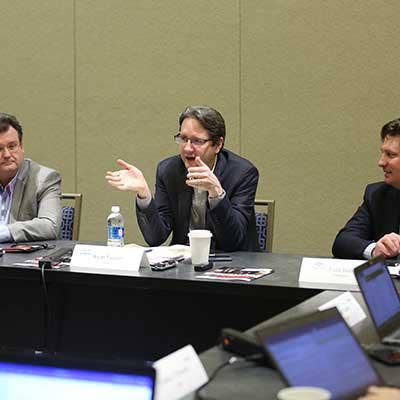
IoT Use Cases For The Channel
From manufacturing to the medical market, solution providers have an array of verticals where they can deploy Internet of Things (IoT) solutions. During an IoT roundtable hosted by CRN, executives from HPE, Cisco and Forescout talked about the coolest use cases in IoT they see in partner deployments. The roundtable, which took place during the XChange Solution Provider 2017 conference, was comprised of Bryan Tantzen, general manager of Cisco's connected industry and manufacturing business unit; Tom Bradicich, vice president and general manager of servers, converged edge and IoT systems at HPE; and Todd DeBell, vice president of worldwide channel sales at Forescout Technologies. Following are excerpts from the IoT roundtable.
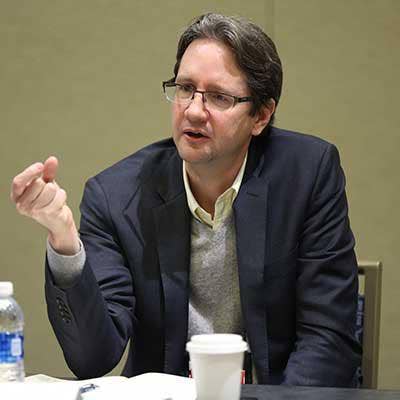
What is a use case where you deployed an Internet of Things solution using a channel partner?
Bryan Tantzen: A conference room, for example … it's a perfect fit for the channel partners, because they're already providing those domains. But how do you know which conference rooms are being utilized? The utilization rates are so very, very low, of conference rooms. So how do we change, actually providing analytics to know which ones are utilized, what's the rate over time, how do you optimize that? How do you tailor using IoT technologies experienced when you walk into that conference room and tailor it to that specific individual using these new capabilities? Things like that we can really use to reinvent both productivity of the building, as well as productivity of the people.
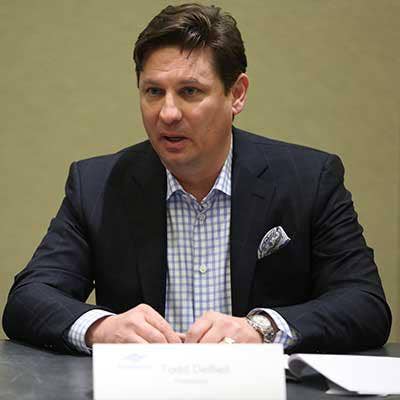
Todd DeBell: As you're looking at the different hacks that have happened, and the currents of items that have happened this year, we're getting ahead of those and helping our partners, and our partners are helping their users, get to a spot where that control piece of the solution that we offer, that they go out and deliver.
So, for instance, medical is a good example where we've had a couple opportunities where channel partners have went in on the medical side and all of a sudden, when they've turned on our product, they've been able to see different devices that were on the network that they didn't see before. For example, we had a number of heart pumps that were in a closet, that apparently somebody cleaned out or moved to the closet, and were off the grid, nobody could find those. All of a sudden, they were on the network, they were in a situation where they could identify what those were based on the footprints and the items that we had helped them with. So, right out of the gates, that hospital had an inventory situation as well as a security situation, as they knew what it was and they knew how to secure it, and they knew what it was from a footprint standpoint.
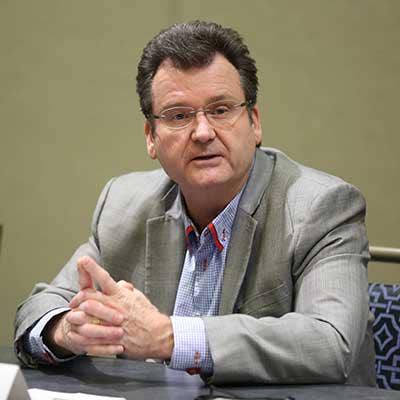
Tom Bradicich: So, those two domains are extremely important to us as a company, but the exciting part, I think is that migration to the OT world, the operational technology world. One, because the end-to-end IoT solution includes a tremendous amount of OT, stuff we admittedly don't make and sell. But it also includes a tremendous amount of IT, stuff we're good at. We're number one in compute, for example. That combination, though is really where the channel partner will when, when they combine it. And I pick Schneider, and I pick National Instruments. Recently we just did a press release that the Tata, in India, we're going to build smart cities with them, so they are a systems integrator and a channel partner. And we have the Universal IoT Platform, which is a software product that runs primarily in the cloud, and it manages cellular and mobile networks, and does device configuration and does analytics on those devices and employs security on those devices. So that will be a smart city initiative that will start with India because it's the obvious location.

How are you working with these partners to help them with the appropriate resources, tools, products and training when deploying IoT solutions?
Bryan Tantzen: We're very much focused on enabling our traditional channel into the IoT space, and we have a solution practice builder helping them build vertical practices, helping them build solution practice on these new domains. We have the solution incentive programs and things like that, that give an extra margin incentive for them to move up the stack with us as well. We've got things like our strategic technology integrator program that's really designed for new kinds of channel partners like Rockwell Automation, or somebody that's really going to go to market with our solutions, and embed them into their solutions. So I'd say we're building our traditional IT channel, we've got our SI channel that we're going after as well, we've got a service provider channel.

Todd DeBell: We announced a new program this year. We went back and forth on a couple things that we thought were pretty key. First off is professional services. We started to move a percentage of our professional services to the channel. Traditionally, we were at 70 percent direct on the professional services and 30 percent through the channel. We moved it to a 60-40 model where 60 percent is our goal with our channel partners to deliver it, and 40 percent is ours. The goal there was to sit down and help the partners from a compelling event. From a numbers standpoint it's, "how do I actually drive more margin and more dollars to their bottom line to put them in a position where they have more control?" We moved from a traditional model to also include a proof of concept model as we enter the new program. And essentially what we've said is, "Look, the V in Value ad, we want you to step up and actually provide that V."
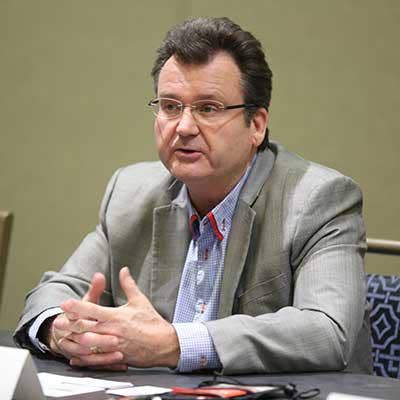
Tom Bradicich: Now, the channel dimension is very interesting. I think you know HP has thousands of channel partners, like many large companies. But now we are taking on, very quickly, the OT world. And let me pick, for example, Schneider Electric. They are both a channel partner, they resell and promote solutions with their technology combined with us ours on their marketplace. And we're working together with them in the IoT space, the smart building space, and the data acquisition space. They become a technology partner, as well as a distributor. National Instruments … recently signed a resell agreement with us, they're taking the HP Edgeline system. So, again, this is the first time we've put control systems and data acquisition systems slammed right up against, in the same box, our compute and storage, and our famous remote management. So now that channel partner gets to move that particular product out, but is also adding ingredients and … the value added reseller.
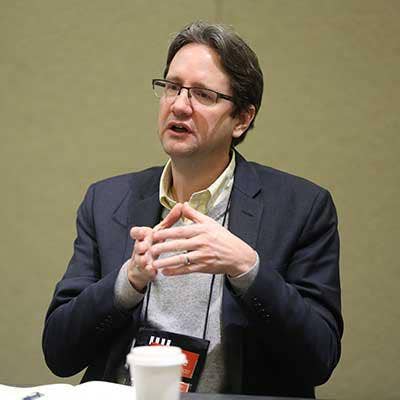
What are the first steps solution providers can take who want to work with you in deploying IoT solutions?
Bryan Tantzen: I think there are three things they should try doing that will make them really successful to go after this opportunity. One is, I think you alluded to it, but the vertical knowledge. They've got to pick some verticals, hire some people that walk the talk, that can speak the language. The solutions are very similar. There's a $2 billion industrial networking market … And then two, they need to take the time to build new relationships. If you're only selling to the people over here that are doing the corporate network refresh, or the move compute data center, and you're not talking to the OT buyer, you're not going to be successful. And then three, they may want to consider partnering. Maybe not buying, but partnering with OT vendors, so they know who to go to. And I've seen a couple, like WWT, buy software companies. So that they can start doing software development into this OT space. That's something to think about as well.
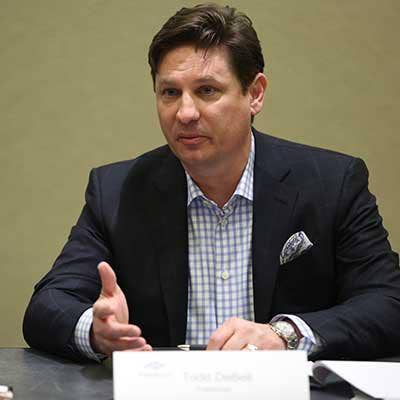
Todd DeBell: I think the piece that is missing is that knowledge about – like a gaming customer, someone who has casinos – what are the regulations from a state and federal standpoint? What other items are there? So, understanding the compliance piece, as well. And that's where I would take it a step further. Knowing the piece in the back end understands, from a channel partner perspective, how to put all the pieces together, is important. And I think knowing the other pieces of actually the compliance, and understanding that piece from a regulatory standpoint from security.
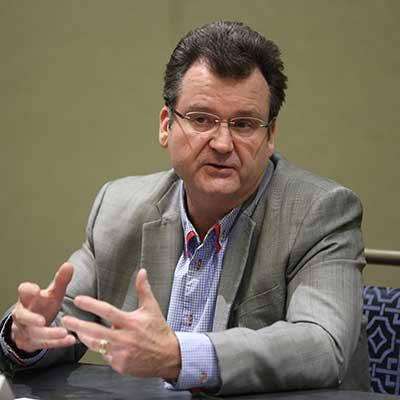
Tom Bradicich: I could offer this advice to the channel partners. I think if you sit back and you look at: Why would you ever do this thing we call IoT? Connect things to networks and computing. Why would you do it? If you distill it, it's all about what action you'll take on the data from a thing. Now, the insight you get from the data when it's collected is done with analytics. You can't get the data without some connectivity. You can't get the analytics running or any insight without some compute. And you can't act, which is the ultimate reason you have this, to do some action, whether it be fixing your inventory problem across the state or whether it be move your robotic arm to calibrate it, or whether you steer an autonomous vehicle, whatever that action is. So, the notion of connecting and then computing and then controlling and action, if you look at it, everything is a means to an end except the action. Everything's a means to an end.